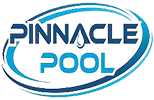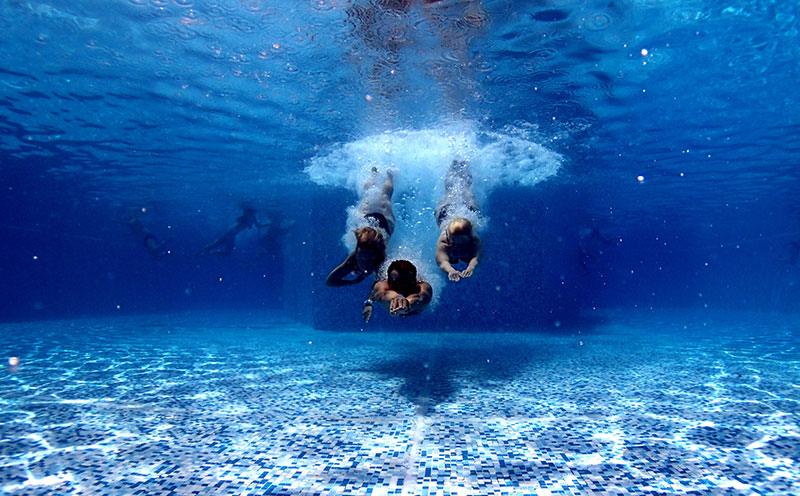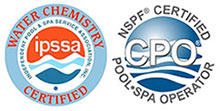I’ll never forget opening my July 2012 PG&E bill. $427. For one month. I actually laughed out loud—the bitter kind of laugh you make when you realize you’ve been played. Here I am, Cooper from Pinnacle Pool & Spa Services, the guy who fixes everyone else’s pool problems, and my own single-speed pump was robbing me blind.
The real kicker? My pool pump was using more electricity than my air conditioner. In Sacramento. In July. Let that sink in for a minute.
I’m sharing this embarrassing story because if the pool guy can get hosed by his own equipment, anyone can. But here’s the good news: after 10+ years of installing variable speed pumps throughout Northern California, I can tell you exactly how much you’ll save, which pumps actually deliver, and how to grab every rebate dollar available before they disappear.
The Single-Speed Pump Problem (Or: How Your Pool is Pickpocketing You)
Your single-speed pump is like that friend who only has one volume setting: LOUD. It runs at 3,450 RPM whether it’s filtering, heating, or just moving water around for the sake of moving water. That’s like driving your car at redline to go buy milk. Sure, you’ll get there, but at what cost?
Last month, I worked on a pool in Folsom where the owner handed me a stack of PG&E bills. “Cooper,” he said, “something’s wrong. My summer bills are $380.” We did the math together. His single-speed pump was consuming 2,400 kWh per month—about 65% of his total electrical usage. After installing a variable speed pump? His August bill dropped to $165.
But energy waste is just part of the problem. Running full-speed constantly is like forcing your equipment to sprint a marathon every single day. Your filter pressure stays maxed out, wearing out cartridges in half the time. Your plumbing takes a beating from constant high pressure. And let’s talk about the elephant on the pool deck: noise. I’ve literally been called to “fix” pools where the only problem was neighbors complaining about pump noise at 6 AM. A variable speed pump running on low? You can barely hear it from five feet away.
Variable Speed Technology – Not Just Marketing Hype
Here’s how variable speed pumps actually work, minus the engineering degree: imagine your pump as a smart assistant that knows exactly how hard to work for each task. Need to vacuum? It cranks up to high speed. Just filtering on a Tuesday afternoon? It drops to a gentle 1,200 RPM, using 85% less energy while still keeping your water crystal clear.
The magic is in what I call the “Goldilocks Principle”—not too fast, not too slow, but just right for what you’re doing. Your pump might run at 3,000 RPM for two hours while your pool cleaner works, then drop to 1,750 RPM for the next 10 hours of filtration. The result? The same clean pool using a fraction of the energy.
When I upgraded my own 22,000-gallon pool in 2013, I tracked everything like a science experiment. First year energy savings: $1,347. Second year: $1,425. Third year: $1,508 (thanks to rate increases). My pump paid for itself in 16 months, and I’ve been banking the savings ever since.
“Cooper at Pinnacle Pool and Spa recently replaced my pool heater and I can’t thank him enough. He quoted me a super reasonable price and although it ended up being more work, he never mentioned any additional charges. Despite the install being a bit of a pain, he didn’t cut any corners and really did nice work.”
— Matt Johnson, Walnut Grove
The Math That Makes You Move
Pentair has this brilliant calculator on their website (check it out here) that shows exactly what you’ll save. But let me give you real numbers from actual pools on my service route:
15,000-gallon pool in El Dorado Hills: Single-speed pump cost: $158/month in summer. Variable speed cost: $31/month. Annual savings: $1,450. This client called it “the best investment since solar panels.”
25,000-gallon pool in Walnut Creek: Was spending $2,900/year on pump operation. Now spends $1,050. ROI timeline: 14 months. The owner used first-year savings to re-plaster his pool.
35,000-gallon pool with spa in Granite Bay: This one hurt to see—$385/month just for the pump. Post-upgrade: $97/month. Annual savings: $2,200. They literally save enough to pay for weekly pool service.
The pattern is clear: most pools see 70-85% energy reduction during low-speed operation. Your actual savings depend on your pool size, how many hours you run your pump, and local electricity rates. SMUD customers typically save less than PG&E customers due to lower rates, but we’re still talking $800-1,500 annually for average-sized pools.
“I highly recommend Cooper at Pinnacle Pool and Spa Service. He recently performed a complex leak repair for me, including a leaking underground pipe. He was able to fit me in within a reasonable amount of time when others could not do so for months. Aside from being a pleasure to work with, he is knowledgeable, thorough, reliable, hard-working, honest and reasonably priced.”
— Jon Chang, Walnut Grove
Current Rebates & Incentives (October 2025 Update)
Let’s talk free money—because that’s essentially what rebates are. The landscape changes constantly, but here’s what’s available right now:
Pentair Manufacturer Rebates: Through May 2025, Pentair offers a $100 rebate on IntelliFlo3 and IntelliPro3 VSF pumps. The IntelliCenter Lite Control Systems qualify for $250 back through April 2025. Get the rebate forms here. Pro tip: Submit within 30 days of purchase—no exceptions.
Utility Rebates—The California Reality: This is where it gets interesting. PG&E discontinued their pool pump rebate program (trust me, I’m not happy about it), but other utilities still have money on the table. SMUD occasionally offers rebates—check their current rebate page for availability. Smaller utilities like Roseville Electric and Pasadena Water & Power maintain programs. Pentair’s utility rebate finder is your best resource for current programs.
Federal Tax Credits—The Clock is Ticking: Here’s the big one: Energy Star certified variable speed pumps qualify for a federal tax credit of 30% of the cost (up to $2,000). But—and this is crucial—this expires December 31, 2025. Not “installed by,” but “purchased by.” Don’t wait until December 20th and wonder why contractors aren’t returning calls.
I recently helped a client in Fair Oaks stack rebates: $100 from Pentair, $600 federal tax credit, and a utility rebate. Total savings on installation: $700. Their pump will pay for itself in 11 months.
What Really Happens During Installation
Here’s what actually happens during a variable speed upgrade—the stuff nobody mentions until the installer shows up.
First, electrical requirements. Many variable speed pumps need different wiring than your old pump. If your electrical panel is from the Reagan administration, you might need upgrades. I’d say 30% of my installations require some electrical work. Not trying to upsell you—just keeping your house from burning down.
Programming is where the magic happens—or doesn’t. I’ve fixed dozens of variable speed pumps that were “broken” but actually just programmed wrong. Running a variable speed pump at high speed 24/7 is like buying a Tesla and never taking it out of first gear. Proper programming considers your pool size, filter type, features, and usage patterns. This takes expertise, not just following the manual.
Timeline? A straightforward pump swap takes 4-6 hours. If we’re dealing with plumbing modifications or electrical upgrades, plan for a full day. I always test everything thoroughly—running through all speeds, checking for leaks, ensuring proper flow rates. Rushing this process is how problems start.
Beyond Energy Savings—The Perks Nobody Mentions
The quiet operation still amazes me. Last week, a client in Davis called because she thought her new pump was broken. I drove out, checked everything—pump was running perfectly at 1,750 RPM. She literally couldn’t hear it from 10 feet away. “I’ve been checking if it’s running every morning for a week,” she admitted.
Your equipment will thank you too. Lower speeds mean less stress on everything. Filters last longer without constant high pressure. Salt cells operate more efficiently. Heaters work better with steady, moderate flow. I’ve seen pool equipment lifespans increase by 30-40% after variable speed upgrades.
And water quality? When water moves slower through your filter, it actually gets cleaner. It’s like the difference between walking through a car wash versus sprinting through. Plus, chemicals mix better at lower speeds, meaning more effective sanitation with less chemical use.
“Incredibly fast (even though they were very busy pinnacle pool was able to make a leak detection service visit and repair within less than 30 minutes to Folsom area), knowledgeable, and honest service. Absolutely glad I found them.”
— Corey K., Sacramento
Which Pump is Right for YOUR Pool?
Not all variable speed pumps are created equal. Here’s my honest assessment:
For pools under 20,000 gallons: The IntelliFlo3 VSF is your sweet spot. It’s efficient, reliable, and won’t overpower your plumbing. Perfect for typical suburban pools without extensive water features.
For 20,000-35,000 gallons: Consider the IntelliPro3 VSF. Slightly more powerful, handles multiple features well. If you have a spa, waterfall, or pool cleaner that needs good pressure, this is your pump.
For large pools or multiple water features: You need the big guns. We’re talking about specialized high-flow variable speed pumps. Yes, they cost more, but trying to run a 45,000-gallon pool with an undersized pump is like towing a boat with a Prius.
Integration matters too. If you have a salt system, make sure your pump plays nice with it. Planning to add automation later? Get a pump that’s automation-ready now. It’s cheaper than upgrading twice.
Making It Happen—Your Action Plan
Here’s your roadmap to lower energy bills:
Step 1: Calculate your savings potential. Use Pentair’s calculator with your actual pump run times and local electric rates. Be honest about run times—most people underestimate.
Step 2: Check rebates TODAY. Visit Pentair’s rebate center and your utility’s website. Screenshot everything—rebates can disappear overnight.
Step 3: Get a professional assessment. Any decent pool professional should provide a free evaluation. If they can’t explain the ROI clearly, find someone else.
Step 4: Compare quotes carefully. Lowest price isn’t always best value. Does the quote include electrical work if needed? Proper programming? Warranty support? The $200 you save with the cheap guy costs $500 when problems arise.
Step 5: Schedule before summer. May and June are insane in the pool business. Schedule your upgrade in March or April for better service and faster installation.
A Simple Way to See Your Potential Savings
Here’s an eye-opening exercise that really puts things in perspective: if you grab your last three summer electric bills and add them up, you can get a clear picture of what you’re currently spending. Now, when you consider that a variable speed pump typically cuts pool-related energy costs by 50-80%, those numbers become pretty interesting. That’s real money that stays in your pocket every month.
One client in Roseville did this calculation last year and discovered his potential savings would be $1,847 in the first year alone. He sent me a photo from Hawaii with the caption: “Pool pump paid for this!” That’s what I love about this upgrade—it turns what was essentially wasted money into something that actually improves your life.
I’ve been servicing pools since before variable speed pumps existed. I’ve watched the technology evolve, the prices drop, and the savings increase. Right now, with rebates available and energy costs climbing, is genuinely the best time I’ve seen to upgrade. The federal tax credit expires in December 2025. Utility rebates are shrinking or disappearing. The window is closing.
Your pool should be a source of joy, not a monthly financial burden. A variable speed pump won’t make your pool clean itself (still working on that), but it will dramatically cut your operating costs while making everything run better, quieter, and longer.
If you’re curious about what a variable speed pump could save you, or if you have questions about rebates and installation, I’m always happy to help. That’s what we’re here for at Pinnacle Pool & Spa Services—making sure you get the most enjoyment from your pool without breaking the bank on operating costs.
Contact Pinnacle Pool & Spa Services for your free energy assessment:
Sacramento Area: (916) 530-2096 | Bay Area: (925) 849-6545 | Toll Free: (888) 994-7665 (POOL)
Professional pool service, equipment installation, and honest advice for residential and commercial properties throughout Northern California. Saving pool owners money on energy costs since 2012.



